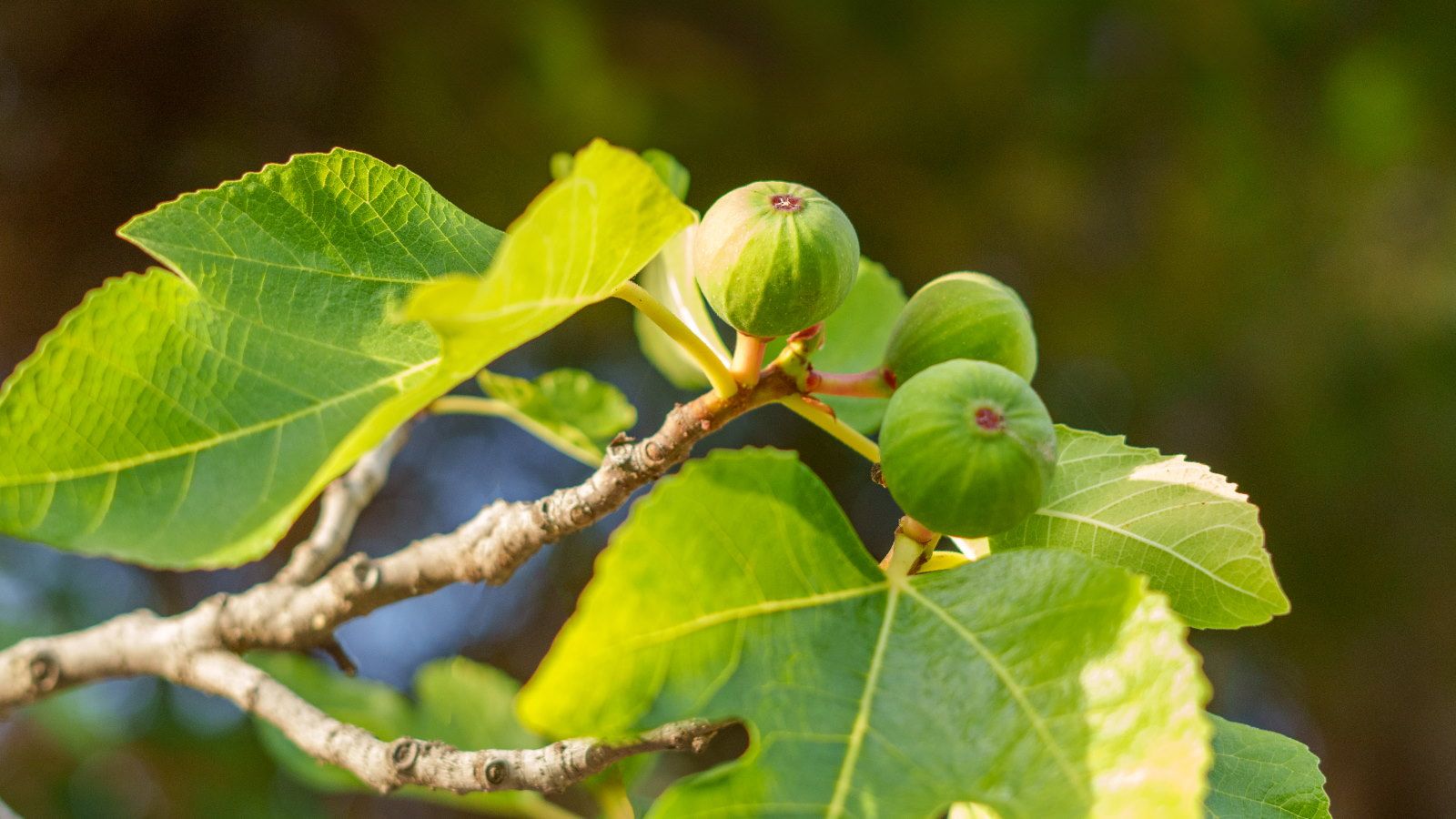What could be better than picking home-grown fruit from a tree in the backyard? It always tastes much better than fruit from the supermarket. If you want to grow your own fruit, there are a number of trees you can plant in any backyard – will you go for one of the classic favorites or something more tropical?
If you live in a warmer climate, you may be concerned about how much water a fruit tree in the garden needs during the hot summer months. Fortunately, there is a wide variety of drought-resistant fruit trees that are well suited to dry climates and require minimal water.
Figs, pomegranates, olives, persimmons, medlars and jujubes can survive periods of drought once they’re established. I’ll take a closer look at these most drought-tolerant fruit trees and get tips from fruit tree experts on watering and caring for each tree so you can figure out which tree is best for your garden.
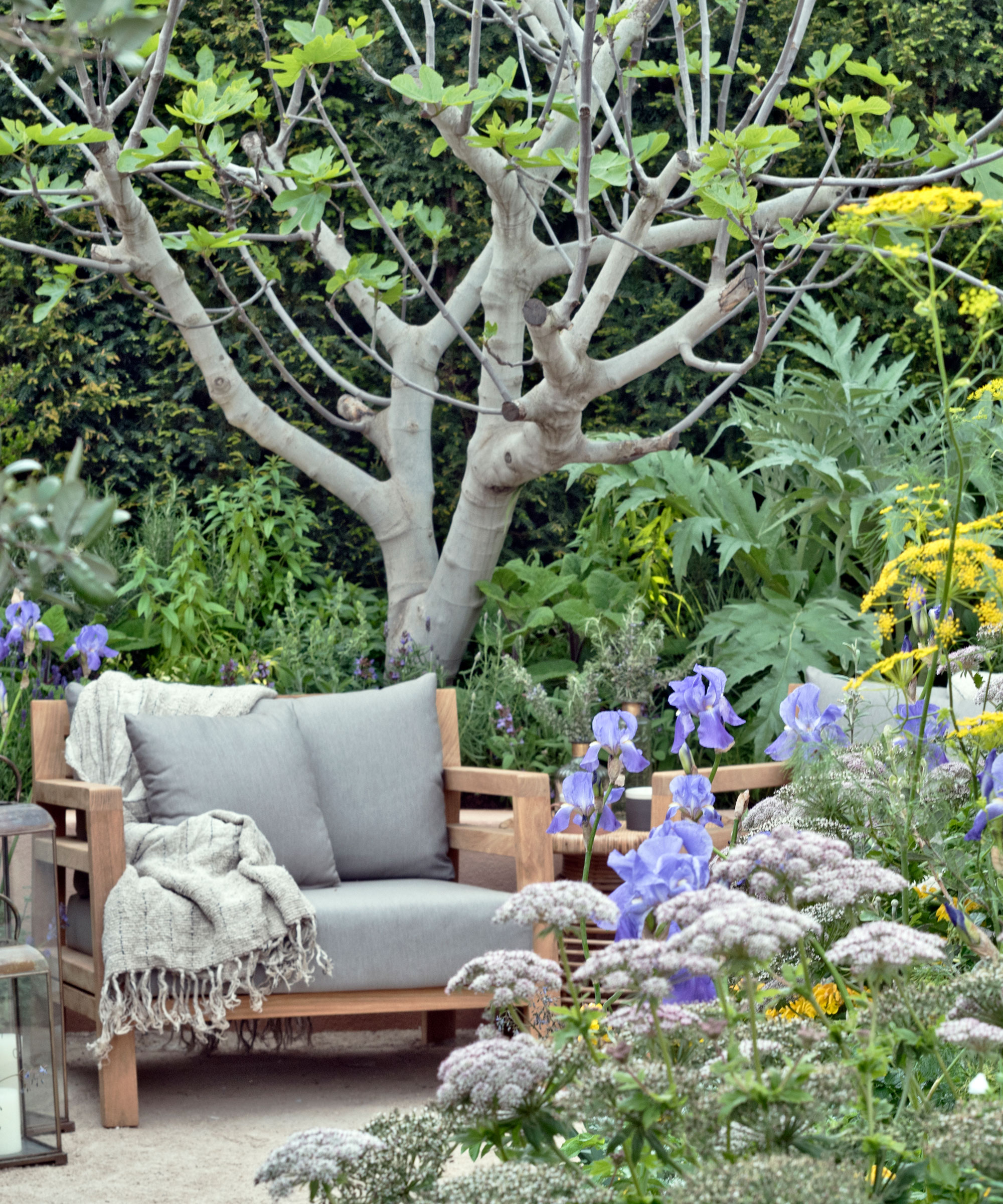
When can a fruit tree be considered drought resistant?
It may take two to three years after planting for a fruit tree to be considered truly drought tolerant. Every fruit tree needs regular watering to develop a strong root system. Once established, the fruit tree can survive with natural rainfall and occasional watering during extended dry periods. If you are growing fruit trees in pots, they are more vulnerable in dry weather and will need regular, thorough watering and careful attention to ensure the soil does not dry out.
1. Fig.

- Size: 10-30 feet
- type: Deciduous
- Suitable for: US hardiness zones 7-11
- Location: Sunny and sheltered
“When it comes to drought-tolerant fruit trees, fig trees are the undisputed superheroes of the dry landscape,” says Maureen Wright, expert at Fast Growing Trees. “Fig trees are exceptionally drought-tolerant, making them a popular choice for gardeners in dry regions. They can handle periods of low water availability, but appreciate occasional, deep watering to produce the best fruit.”
Fig trees are native to the Mediterranean and western Asia and are ideal trees if you want to create a Mediterranean garden at home. The fruit trees thrive in warm summers, and there are also fig tree varieties that are hardy and can survive colder winters.
Although fig trees are drought tolerant, during dry periods it is good to water them thoroughly every few weeks to ensure good fruit production. Once a tree is established, you can begin harvesting figs in late summer, which you can enjoy in sweet or savory dishes.
A Brown Turkey fig can give you two harvests per year, one in late spring or early summer and the main harvest in early fall. It is a variety that can also survive winter cold
2. Pomegranate

- Size: 10-16 feet
- type: Deciduous or evergreen in warmer climates
- Suitable for: US hardiness zones 7-11
- Location: Full sun
Pomegranates are exotic, fast-growing fruit trees that are frost hardy and thrive in hot and dry conditions. The trees are widely grown in East Asia, North Africa and the Mediterranean for their distinctive, round fruits that are packed with vitamins, minerals and antioxidants. Pomegranates need plenty of sun and you can buy dwarf varieties if you’re looking for a fruit tree for a small garden.
“Their natural adaptation to dry climates makes them a reliable choice for water-conscious gardeners,” says Maureen Wright. “Regular, deep watering during the first few years helps establish their root system, but once mature, pomegranates require minimal watering.”
“Pomegranates are not only drought-resistant but also relatively easy to care for, making them attractive to anyone looking to save water without sacrificing fruit production,” adds Maureen.
Desertnyi is a selection from the Turkmen collection of world-famous wild pomegranates. Desertnyi has a balanced taste with a delicious orange note.
3. Olive

- Size: 20-30 feet
- type: Evergreen
- Suitable for: US hardiness zones 6-11 (depending on variety)
- Location: Full sun
Olive trees are native to the Mediterranean and are ideal for hot and dry conditions. There are hundreds of olive varieties, with some olive trees being more drought resistant than others, but all can tolerate dry conditions once established.
Olive trees have evolved in their traditional habitats in southern Europe to survive long periods without water. Their silvery-green leaves reflect sunlight, reducing water loss.
Katie Brines of Starks Bro’s Nurseries & Orchards claims, “Olive trees are very drought tolerant and thrive with minimal watering needs once established. For best results, water deeply and infrequently, especially during the first 1-2 years to aid resilience and deep root growth.”
Caring for the trees is easy, but you will need to prune olive trees. This includes removing suckers, cutting off dead, damaged or diseased branches, and shaping the tree into a beautiful shape.
View the full range of olive trees at Fast Growing Trees.
4. Persimmon
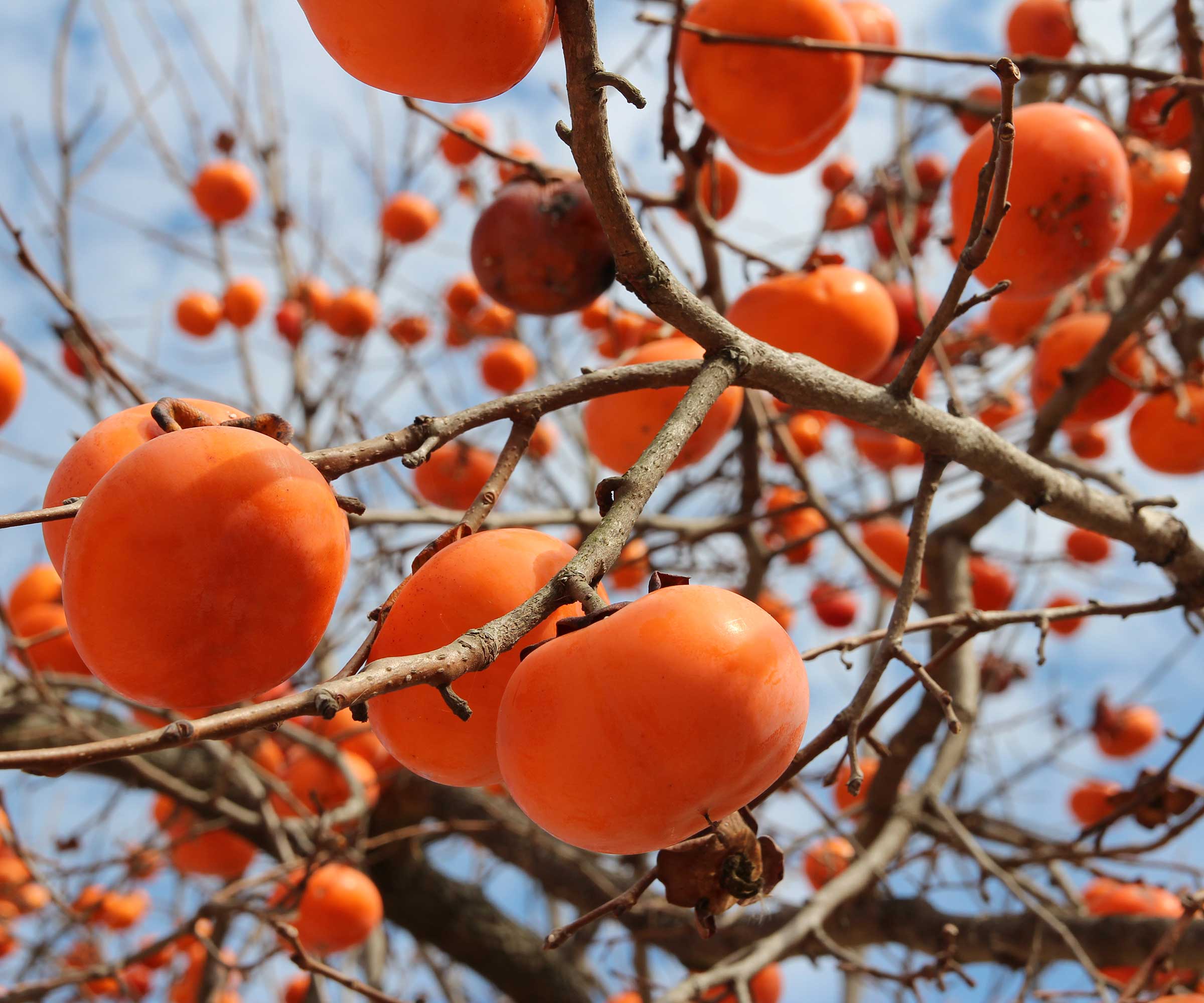
- Size: 15-30 feet
- type: Deciduous
- Suitable for: US hardiness zones 7-11
- Location: Full sun or partial shade
A persimmon is a slow-growing tree that produces glossy and sweet gourd-shaped fruits. They can be yellow, orange or red. Persimmons can be a unique addition to any garden and there are dwarf varieties so you can grow a persimmon tree in a container.
Maureen Wright claims that the persimmon tree has two special characteristics that make it a drought-resistant fruit tree. She says, “Its ability to thrive in dry climates is due to its deep roots that tap into underground water sources. Its waxy leaves also reduce water loss through transpiration, allowing it to survive long periods of drought.”
Persimmon trees are relatively straightforward to grow and self-fertile varieties ensure that you can easily obtain a harvest. You can buy potted plants, such as the Fuyu persimmon tree available from Fast Growing Trees, or, if you fancy an experiment and have patience, you can try planting persimmon seeds to grow your own.
5. Medlar
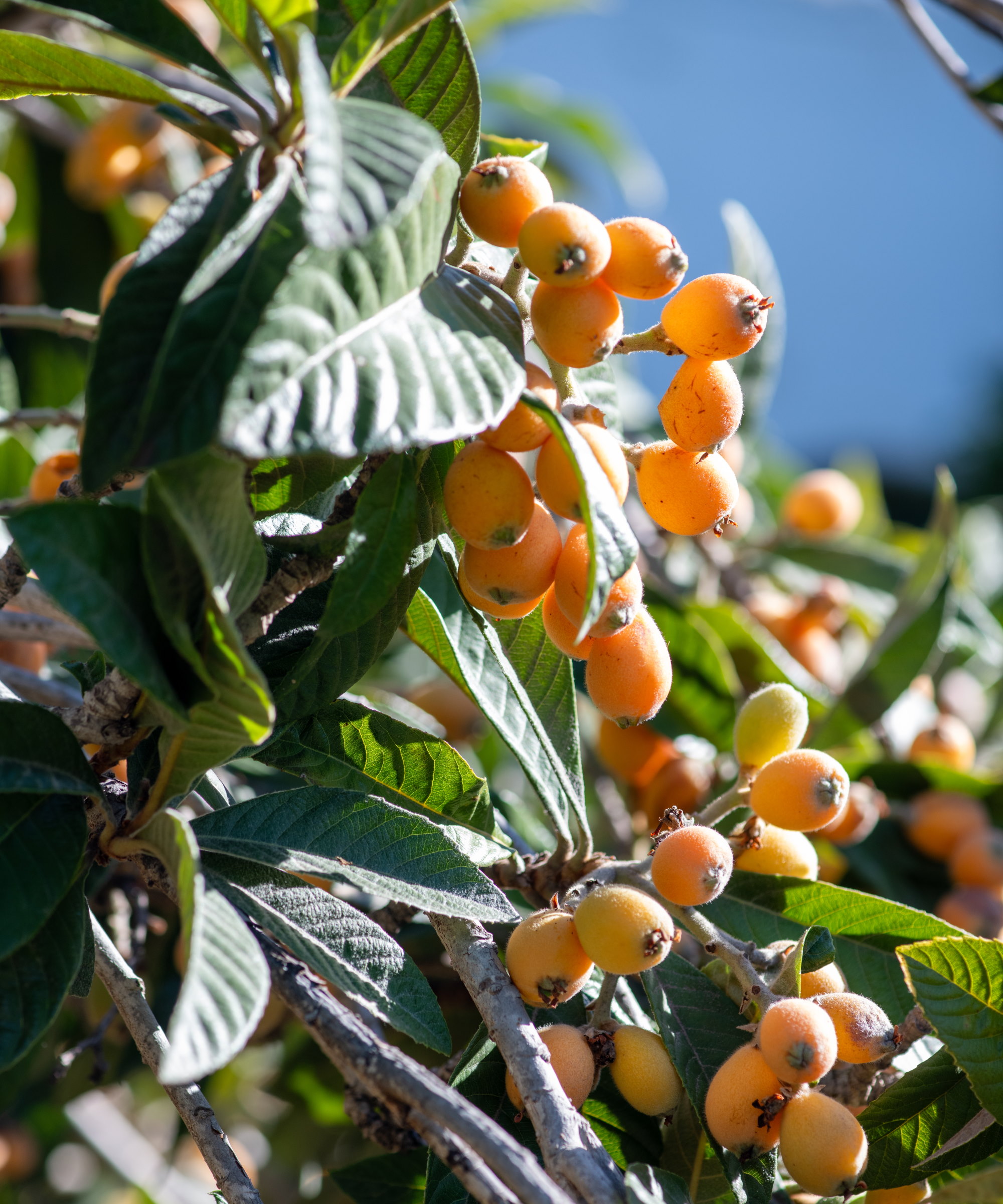
Medlar trees are native to southern China and bear small, sweet, pear-shaped fruits in spring. The fruits resemble apricots but have a hint of citrus and follow the cream-colored, sweet-smelling flowers of late fall and early winter.
Medlar trees love warmth and add a tropical garden atmosphere to any garden. Although they can grow large, you can control the size with regular pruning.
Katie Brines says that while loquats are “reasonably drought tolerant once established,” they do best during the dry season when watered regularly. She recommends placing mulch around the tree’s trunk “to retain soil moisture” and prevent the soil from drying out during extended dry periods.
Medlar tree ‘Japanese plum’
A medlar tree with glossy, thick leaves with serrated edges and delicate white flowers. Medlars thrive in full sun and feel comfortable in partial shade
6. Jujube
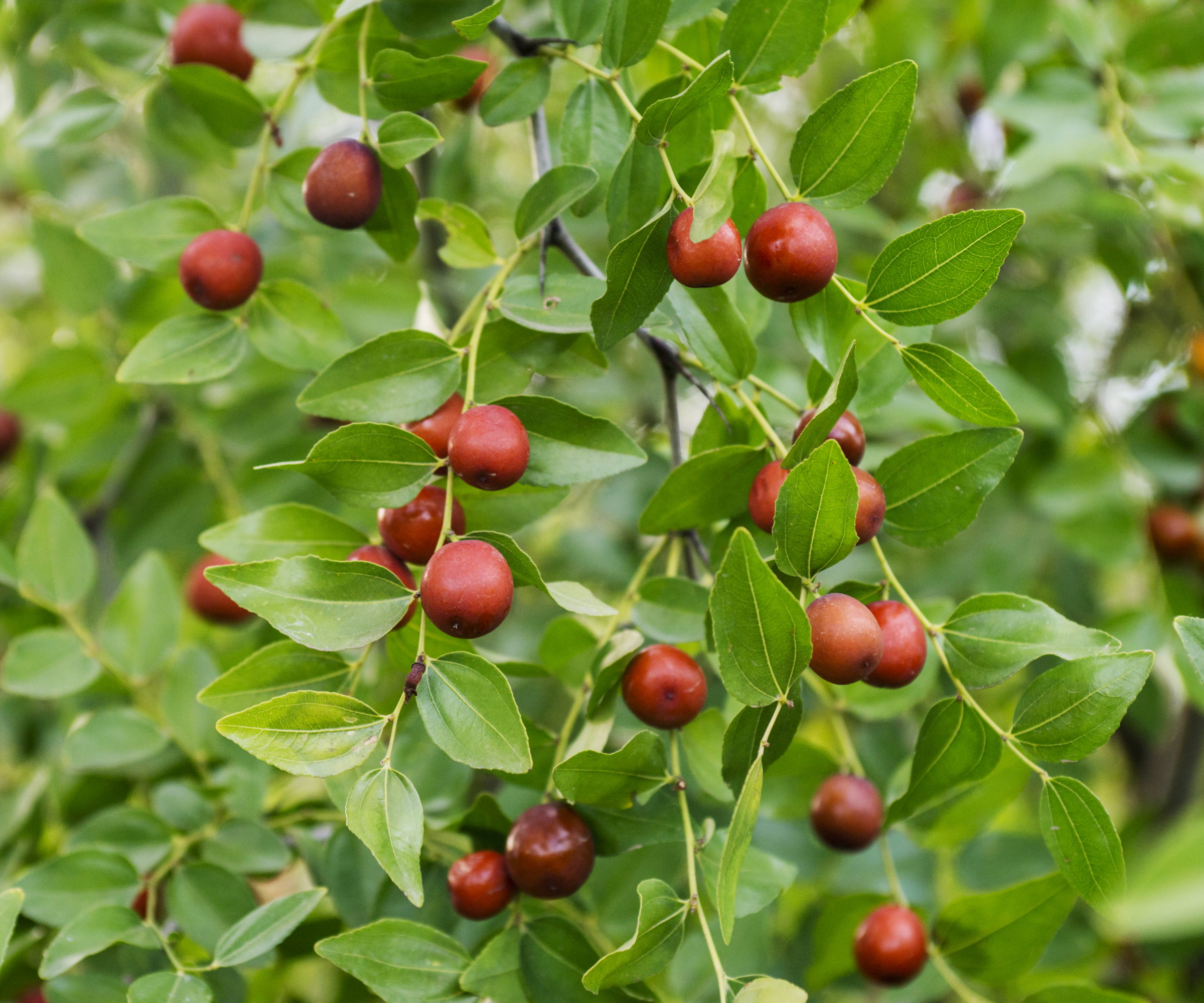
- Size: 10-20 feet
- type: Deciduous
- Suitable for: US hardiness zone 6-11
- Location: Full sun
Jujube trees are also known as Chinese dates and have been cultivated in China for thousands of years. They are widespread throughout Asia and the Middle East and therefore these versatile trees can thrive in both tropical and temperate climates. Jujube trees are frost hardy, with some varieties surviving temperatures as low as -22–6°C.
The small, egg-shaped fruits are sweet and tart, have an apple-like flavor, and their color changes from green to deep red when ripe. In addition to the unique fruit, jujubes produce fragrant yellow flowers in late spring and early summer. The trees grow best in a sunny location with well-drained soil. One recommended variety is the ‘Honey Jar’ jujube, available from Nature Hills, which can tolerate both extreme cold and extreme heat.
FAQ
Which apple rootstock is the most drought tolerant?
Commercial apple trees are usually grown on rootstock to control their growth and make the fruit trees suitable for the garden. The rootstock primarily determines the size of the tree, but it can also affect how an apple tree you plant grows under certain conditions. The MM111 rootstock is a vigorous rootstock that can produce trees up to 19-25 feet tall. It is also considered the best rootstock for helping trees survive drought conditions.
If you are looking for alternative drought-resistant trees, there are also nut trees that can survive dry periods with limited water. Almond trees in particular, which are native to the Mediterranean and Middle East, are particularly drought-resistant and can reward you with flowers and harvests in the summer without the need for extensive watering.

